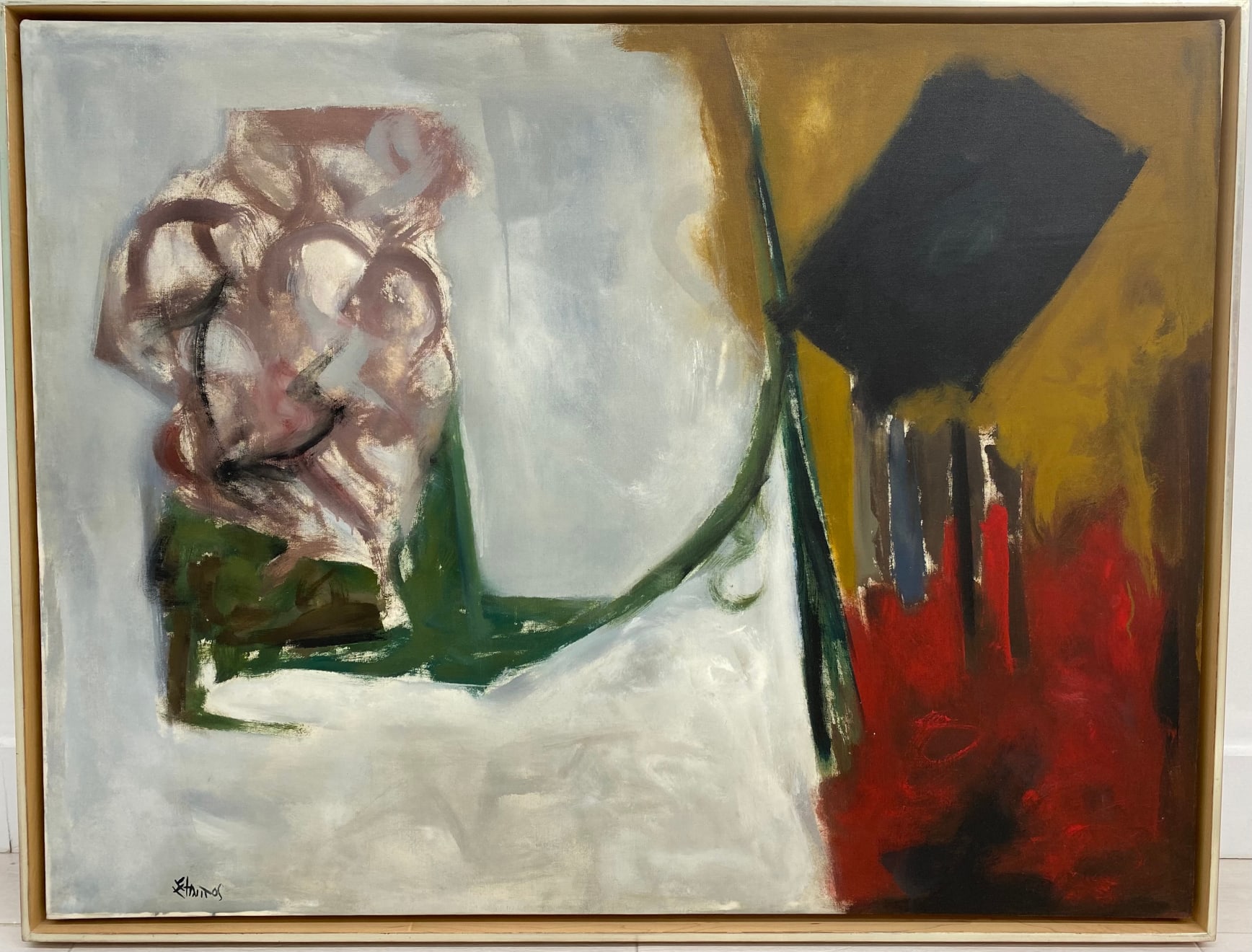Theodoros Stamos
Theodoros Stamos (1922-1997) was a Greek-American painter. Born in Manhattan, Stamos found himself drawn to art at a young age, and was awarded a scholarship to the American Artists School where he studied sculpture. He quickly pivoted to painting, and his talent was noticed by art dealer Betty Parsons, who presented Stamos’ a solo exhibition when he was only 21 years old. Stamos’ work was recognized by large institutions early in his career, as he was featured in many prominent museum exhibitions after working with Parsons. A few years later, he became a member of The Irascible Eighteen, a close-knit community of abstract expressionist painters. Stamos went on to live a life full of travel, which inspired much of his work. He later taught classes at Black Mountain College, Art Students League of New York, and the Cummington School of Fine Arts.
Early in his career, Stamos frequently used earth-toned colors to depict subjects of nature such as rocks, terrain, sand, and water. His forms were abstract and organic, representing his underlying fascination with landscape and the environment. Over time, he broadened his use of color, and used more pronounced brush strokes. Stamos’ art exemplifies 20th century abstraction through his portrayals of biomorphic shapes, gestural paint strokes, and selective use of color.
His work is in the permanent collection of the Museum of Modern Art, the Art Institute of Chicago, the Metropolitan Museum of Art, among many others.
Examining Greek Rug Mountain Laurel (1953), earth tones split the canvas down its center creating a strong narrative. On the left, raw canvas is intentionally exposed, showcasing the nature of Stamos’ process while drawing attention to the forms and lines of the work. Gestural paint strokes echo through the work, characterizing the painting in combination with a cool hue palette. On the right, deep browns, reds, and blacks are coating the canvas, creating depth and richness. Clear exploration of organic versus linear forms generates a conversation between the two sides, as Greek Rug Mountain Laurel thoroughly engages viewers and questions perspective.
